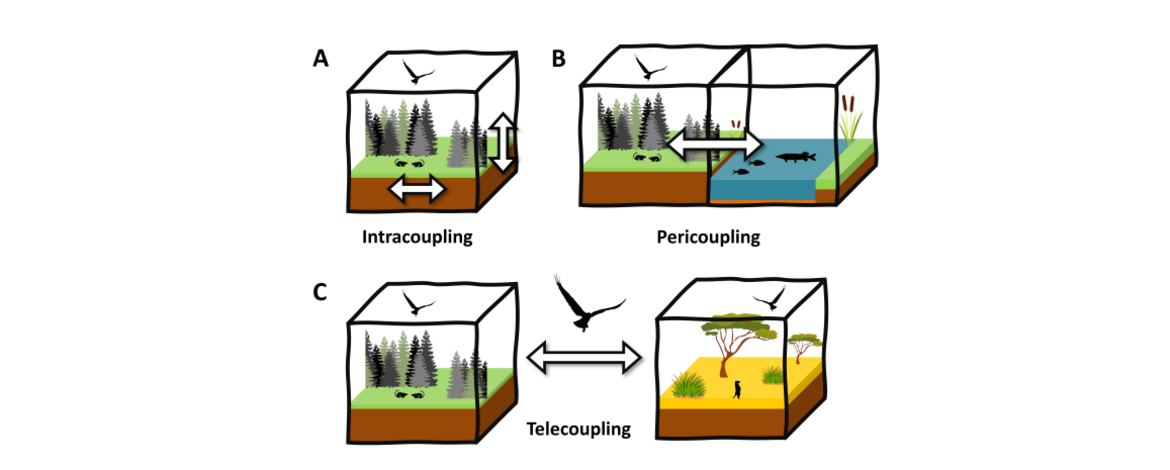Individual-based Global Change Ecology
Global change, characterized by increasing nonlinear dynamics and stochasticity, directly affects the individual organisms of natural systems. However, common ecological concepts estimate ecosystem resilience based on the average characteristics of populations or communities, ignoring variation among individuals and their interactions with the environment. Yet, accounting for this individual variation is often crucial for predicting biodiversity and ecosystem dynamics.
Our research network focuses on individuals to understand biodiversity and resulting ecosystem dynamics. We aim to shift the paradigm from classical "averaging ecology" to an individual-based ecology.
Ecological Coupling
Research on coupling processes has largely proceeded along two parallel paths. One focuses on interactions within ecosystems, while the other addresses flows of energy, chemical elements and their compounds materials, and organisms across ecosystem boundaries, as captured by the meta-ecosystem framework (Loreau et al. 2003, Gounand et al. 2018). This fragmentation in research limits our understanding at a time when ecological coupling processes are becoming increasingly consequential in the face of the twin crises of biodiversity loss and climate change (Díaz et al. 2019). Interactions between within- and between-system dynamics can amplify or mediate the effects of global change drivers.
We look at three types of ecological coupling: intracoupling, pericoupling, and telecoupling. A) Intracoupling within a single ecosystem, illustrated as aboveground–belowground interactions (vertical arrow) and other within-ecosystem linkages (horizontal arrow); B) Pericoupling between adjacent ecosystems, depicted as coupling between a riverine and a terrestrial system, which could be flows of matter, organisms, and/or energy such as nutrient runoff, aquatic insect emergence, or animal movement; and C) Telecoupling between geographically distant ecosystems. Pericoupling and telecoupling together form the broader category of intercoupling.

